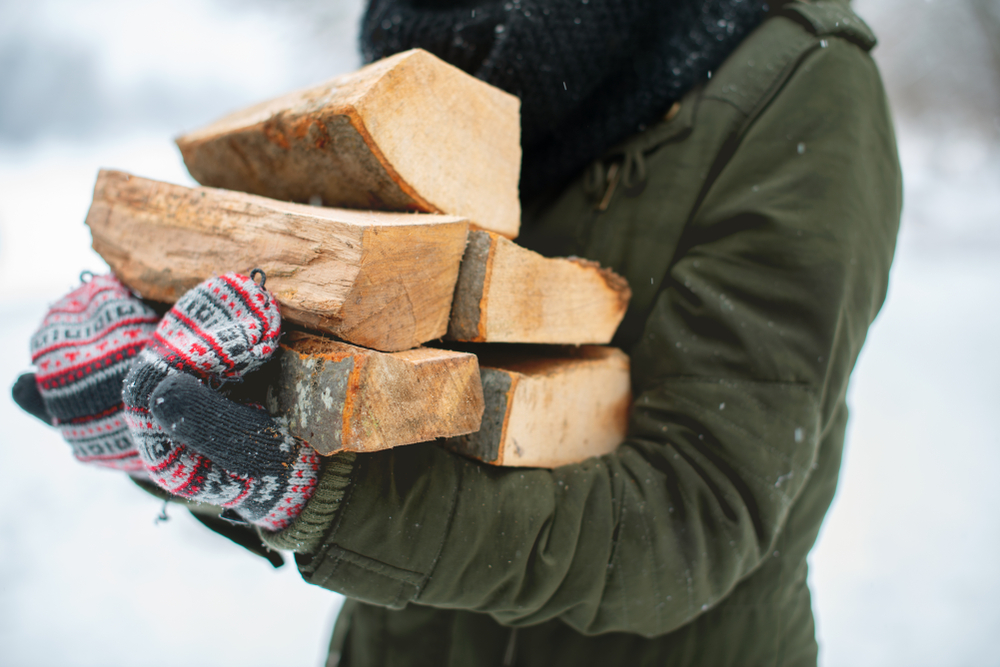How to Properly Store and Season Firewood for Maximum Efficiency

When it comes to burning firewood, the quality of the firewood and how it’s stored can make a significant difference in the efficiency and effectiveness of your fire. Whether you’re looking to enjoy a cozy evening by the fireplace or need reliable firewood for heating during the cold winter months, understanding how to properly store and season firewood is essential. In this guide, we will cover the best practices for storing and seasoning your firewood, ensuring that you have dry, seasoned wood that burns cleanly and efficiently.
The Importance of Using Premium Firewood
Before diving into the specifics of seasoning and storing firewood, it’s crucial to start with the right type of wood. Using premium firewood is essential for achieving a hotter, cleaner burn. Premium firewood typically refers to well-seasoned hardwoods such as oak, hickory, or maple. These types of wood are dense and produce a steady, long-lasting fire with minimal smoke and creosote buildup. If you’re in Lubbock, TX, for example, choosing premium firewood from a reliable supplier ensures you’re getting the best quality, which directly impacts the performance of your fire.
Using properly seasoned wood also means that you won’t have to worry about excess moisture content, which can cause problems like difficulty starting a fire, excess smoke, and reduced heat output. High moisture content in firewood can also lead to creosote buildup in your chimney, creating a serious fire hazard. If you’re not sure about the quality of the firewood you’re purchasing, look for suppliers that offer premium firewood in Lubbock, TX, or similar areas to guarantee you’re getting seasoned and well-dried wood.
Understanding the Seasoning Process
Seasoning firewood is the process of allowing freshly cut wood to dry out over time, reducing its moisture content to a level that will allow it to burn efficiently. Freshly cut wood, known as “green” wood, typically has a moisture content of around 50% to 60%. In comparison, seasoned firewood should have a moisture content of around 20% to 25%. Proper seasoning is crucial because it ensures that the wood burns efficiently, produces more heat, and minimizes smoke and creosote production.
The seasoning process usually takes anywhere from six months to one year, depending on the type of wood, the weather conditions, and the storage methods. Hardwoods like oak or hickory can take longer to season, while softwoods like pine or spruce dry out more quickly. If you are planning to use the firewood for the winter months, it’s important to plan ahead and start seasoning your wood well in advance. For the best results, firewood should be split and stacked in a way that promotes airflow, which helps accelerate the drying process.
How to Properly Stack Firewood for Optimal Seasoning
Once you’ve selected and purchased premium firewood, the next step is stacking it correctly. Storing firewood properly is just as important as the seasoning process itself. A well-stacked pile allows for good air circulation, which is crucial for drying out the wood and preventing mold or rot.
To begin with, choose a storage location that is dry, well-ventilated, and receives plenty of sunlight. Ideally, you should stack your firewood off the ground to prevent moisture from seeping into the wood from the soil. You can use pallets, wooden skids, or a specially designed firewood rack to elevate the pile. This will help air circulate around the bottom of the wood, reducing the risk of moisture buildup.
The stack should be organized in a way that allows air to flow freely between the pieces. When stacking firewood, avoid piling it too tightly together. Instead, stack it loosely to encourage airflow. This can be done by arranging the logs in a crisscross or log cabin style, where each layer of wood is placed in a slightly offset manner to create small gaps between the logs.
If you’re storing firewood outdoors, make sure it is covered to protect it from rain or snow. A simple tarp can do the job, but make sure the tarp only covers the top of the stack and allows for air circulation around the sides. Covering the entire stack can trap moisture, which would defeat the purpose of seasoning the wood.
Factors That Impact the Seasoning Process
Several factors influence the time it takes for firewood to season properly, including wood species, weather conditions, and storage methods. As mentioned earlier, different species of wood dry at different rates. Hardwoods like oak, hickory, and maple can take a year or more to season fully, while softwoods such as pine, fir, and spruce typically dry out faster. It’s important to consider the type of firewood you are working with and plan accordingly.
Weather conditions also play a significant role in the seasoning process. Hot, dry climates with plenty of sunlight are ideal for seasoning firewood because they promote faster evaporation of moisture from the logs. In contrast, cooler, more humid climates can slow down the drying process, meaning that it may take longer for your firewood to reach the desired moisture content.
The size of the logs also affects how quickly they season. Smaller logs tend to dry out more quickly than larger ones, as there is more surface area exposed to the air. If you plan to store large logs, consider splitting them into smaller pieces to accelerate the seasoning process. The rule of thumb is that the smaller the log, the quicker it will dry out and be ready for burning.
How to Tell When Your Firewood Is Ready for Burning
Knowing when your firewood is properly seasoned is crucial to ensure that it burns efficiently and produces the maximum amount of heat. There are a few key indicators that can help you determine whether your wood is ready to burn.
The first indicator is the color and texture of the wood. Seasoned firewood tends to have a grayish-brown color, while unseasoned wood will appear more yellowish or reddish. Additionally, the bark on seasoned wood may begin to peel off, which is a sign that the wood has dried out and is no longer retaining moisture.
The second way to test whether your firewood is seasoned is by tapping two pieces of wood together. If the wood makes a sharp, hollow sound, it’s likely seasoned and ready for burning. If the sound is dull, this is an indication that the wood still contains moisture.
Finally, another effective method for testing firewood is to check the moisture content using a moisture meter. These devices are specifically designed to measure the water content inside the wood. For optimal burning, aim for a moisture content of around 20% to 25%. Firewood that has a higher moisture content will not burn efficiently and will produce more smoke and creosote.
Conclusion
Properly storing and seasoning firewood is essential for achieving the maximum efficiency and effectiveness when it comes to your fires. By starting with premium firewood, stacking it properly, and allowing it to season for the appropriate amount of time, you can ensure that your wood burns efficiently, producing more heat and less smoke. Whether you’re in Lubbock, TX, or anywhere else, taking the time to properly season your firewood is an investment in your comfort and safety. By following these simple yet crucial steps, you’ll be well on your way to enjoying the warmth and ambiance of a well-burned fire all season long.
Need Firewood in Lubbock, TX?
Here at Freedom Firewood in Lubbock, Texas, we take pride in offering a diverse selection of premium, fully seasoned, and ready-to-burn firewood to meet all your needs. Whether you’re looking for oak, hickory, mesquite, pecan, New Mexico pine, pinion pine, or a mixed variety, we have you covered. From one cord to a quarter cord, apartment stacks, and even convenient pre-bagged firewood, we provide the right quantity for you. Plus, with our local and long-distance delivery services, getting your firewood has never been easier. Contact us today to experience the warmth and quality of Freedom Firewood!
